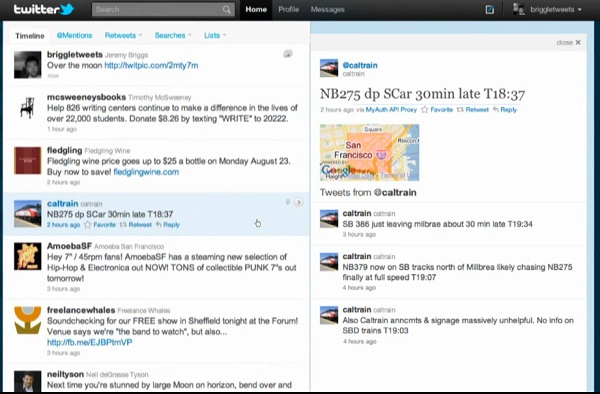So the new Twitter – which we and about a million of other sites have reported on – is slowly rolling out to users as we speak.
On the surface, the new Twitter is all about usability: rather that one main column, it contains two that can adapt to either displaying extra information like lists and trends, or can display the photos and videos or that people are constantly linking to or related tweets.
But thought of another way, this is a way of getting users to stay put on Twitter’s website. Rather than using apps or clicking away, the new design encourages users to stay in one place.
So in a way, this is Twitter’s response to what many people call “the attention economy”.
Helping You Focus (On Ads)
https://www.youtube.com/watch?v=rIpD7hfffQo
The attention economy, if you don’t know, is a term used to describe the competition between various sources of information and entertainment that we increasingly experience in the contemporary era.
On one hand, it describes a new cultural problem in which people seem to have less time and focus to dedicate to one thing. On another, it also describes an economic problem: in the past, when people would focus on one TV channel or one newspaper, it meant ads were a lot more effective as you would actually have someone’s attention for a set amount of time.
Web sites obviously have a lot of trouble with maintaining attention. Because the web is full of links, people are constantly moving around. Becoming successful often means making your site a destination people want to visit and then stay on.
This is why Facebook is so massive. By making itself the default social platform, and allowing other apps and sites to exist within Facebook, it has become among the top two visited sites around the web by giving its users a reason to stay there.
Now Twitter is doing something similar. Not only can even non-users get a sense of what’s going on, regular twitterers can also can look at pictures and videos within the site without clicking away to another site.
In a sense, Twitter.com is like the web version of Flipboard, the iPad app that pulls in your social feeds to produce a digital magazine for you. The new Twitter website is now a place for you to view videos and pictures.
So one hand, this is a way of dealing with how using Twitter can scatter your attention. You have conversations with friends, click away to watch a video or see someone’s photos and then, 20 minutes later, you are disconnected from what you started. By encouraging Twitter users to stick around, they give users something to focus their attention – which any heavy web user will tell you is a good thing.
Twitter: Your New Web Home?
But the other obvious aspect of all this is that Twitter is now a place where we will soon see ads. By making it a destination site – and aggregating the attention that was once scattered by all those sites like yfrog or twitpic – Twitter have made their service a lot more ad-friendly, as people will actually stay there and click things.
So Twitter have made a stab at not only keeping people on their site, but also making it a source of information for real-time news and conversation about the world. If someone tweets about a news event and you can click on related tweets, see videos and snaps etc. It’s a way of gathering conversation – or, to be a bit more buzzword-y “aggregating the social”.
Whether or not this works remains to be seen. Twitter’s users are highly mobile, and mobile use is skyrocketing. What’s more, hardcore users may still prefer apps like Tweetdeck. Still – with the redesign, Twitter have definitely made the homepage more attractive. What is left to discover is how they attempt to monetize it, how users react, and whether competitors like Facebook or Google change in response.
What do you think of the Twitter redesign? And do you think it will help Twitter retain users and develop a strong business model?



GIPHY App Key not set. Please check settings
2 Comments